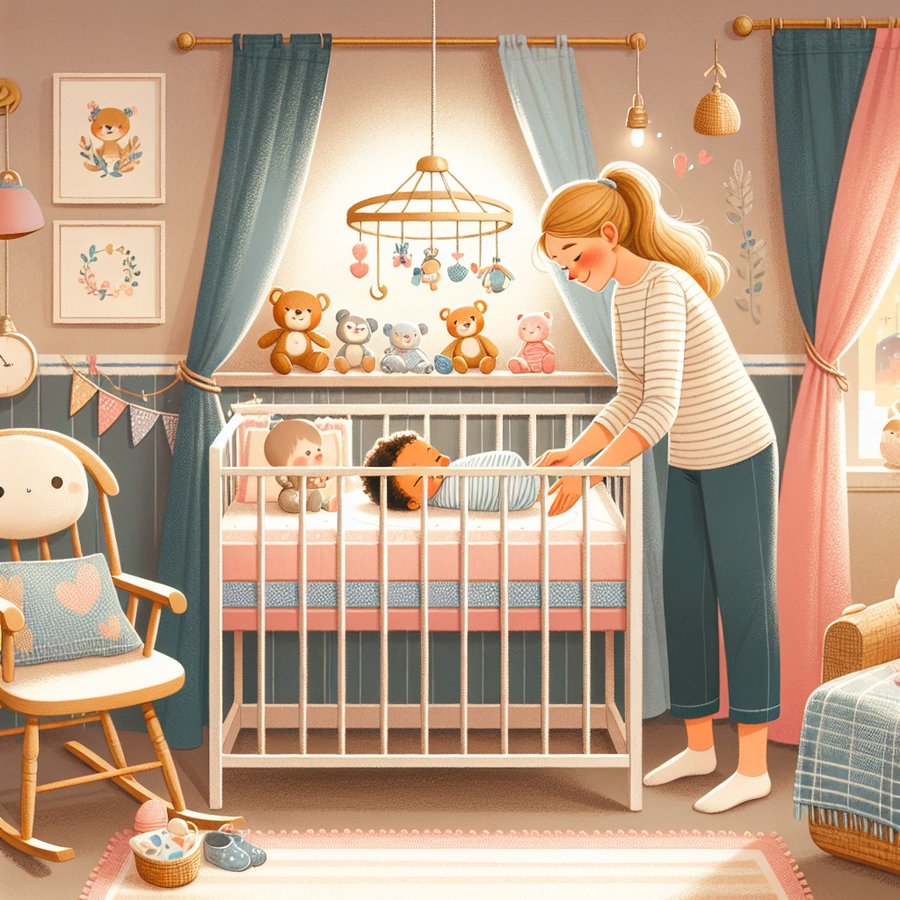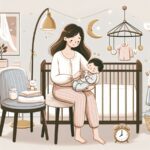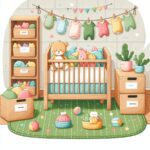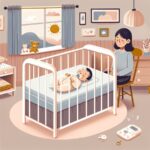Choosing the safest crib setup for newborns is a paramount concern for new parents. This guide delves into the essential aspects of creating a secure and comfortable sleeping environment for your precious little one. From selecting the right crib to understanding the safest bedding practices, we cover everything you need to know to ensure your baby’s safety and your peace of mind.
Understanding the Basics of Crib Safety
The foundation of choosing the safest crib setup for newborns lies in understanding the basics of crib safety. The crib should adhere to the latest safety standards set by authoritative bodies. It’s crucial to select a crib with a firm mattress that fits snugly without any gaps where a baby could potentially get stuck. Additionally, the slats of the crib should be no more than 2 3/8 inches apart to prevent the baby’s head from getting trapped.
Proper assembly of the crib according to the manufacturer’s instructions is equally important. Regular checks for loose screws or broken parts can prevent accidents. For further detailed guidelines, visiting external authoritative sources like the Consumer Product Safety Commission can provide you with the most current crib safety information.
Choosing the Safest Crib Setup for Newborns
When it comes to choosing the safest crib setup for newborns, there are several key factors to consider. First and foremost, the crib itself should be sturdy and free from any decorative elements that could pose a risk, such as cut-outs or protruding hardware. The placement of the crib in the nursery is also vital; it should be away from windows, blinds, and any cords to minimize risks.
Beyond the crib, the choice of bedding plays a significant role in safety. The safest approach is to use a fitted sheet that is specifically designed for the crib mattress, avoiding any soft bedding or pillows that could increase the risk of Sudden Infant Death Syndrome (SIDS). For additional warmth, consider a sleep sack or wearable blanket that does not cover the baby’s head.
Additional Safety Measures and Best Practices
Beyond selecting the right crib and bedding, there are several additional safety measures to consider. Ensuring the nursery is a safe, welcoming space involves more than just the crib setup. The temperature of the room should be kept comfortable to prevent overheating, a factor in SIDS risk. Maintaining the ideal room temperature for baby sleep is essential for their safety and comfort.
Another aspect to consider is the overall sleep environment, which includes minimizing noise and light disruptions. Utilizing white noise machines or lullabies can help create a soothing atmosphere conducive to sleep. Furthermore, establishing a regular sleep schedule and incorporating sleep training methods can contribute to safer and more restful nights. For insights on creating a conducive sleep schedule, refer to how to establish a sleep schedule for a newborn.
Final Thoughts on Ensuring Your Newborn’s Safety
Choosing the safest crib setup for newborns is a comprehensive process that extends beyond the crib itself. It encompasses the entire nursery environment and involves constant vigilance and adaptation as your baby grows. Regularly reviewing safety guidelines and staying informed about the latest safety products and recalls can help you maintain a safe sleeping environment for your newborn.
Remember, your baby’s safety is paramount. Taking the time to carefully select each element of the crib setup and nursery can provide not only peace of mind but also create a safe, cozy haven for your little one. For more insights into optimizing your baby’s sleep environment and addressing common sleep concerns, explore our other resources, such as optimizing the nursery for sound sleep and dealing with sleep regression at 9 months.













